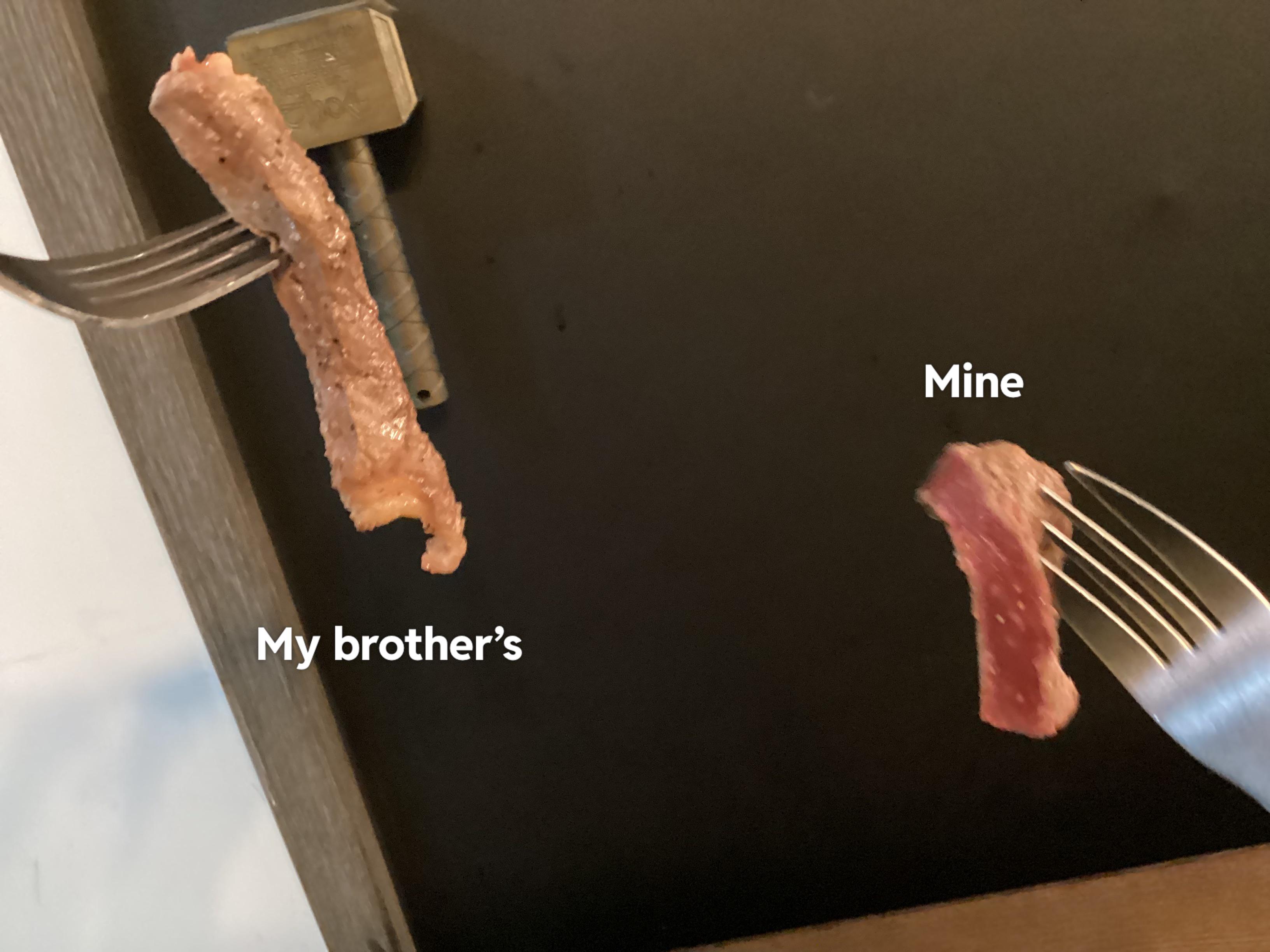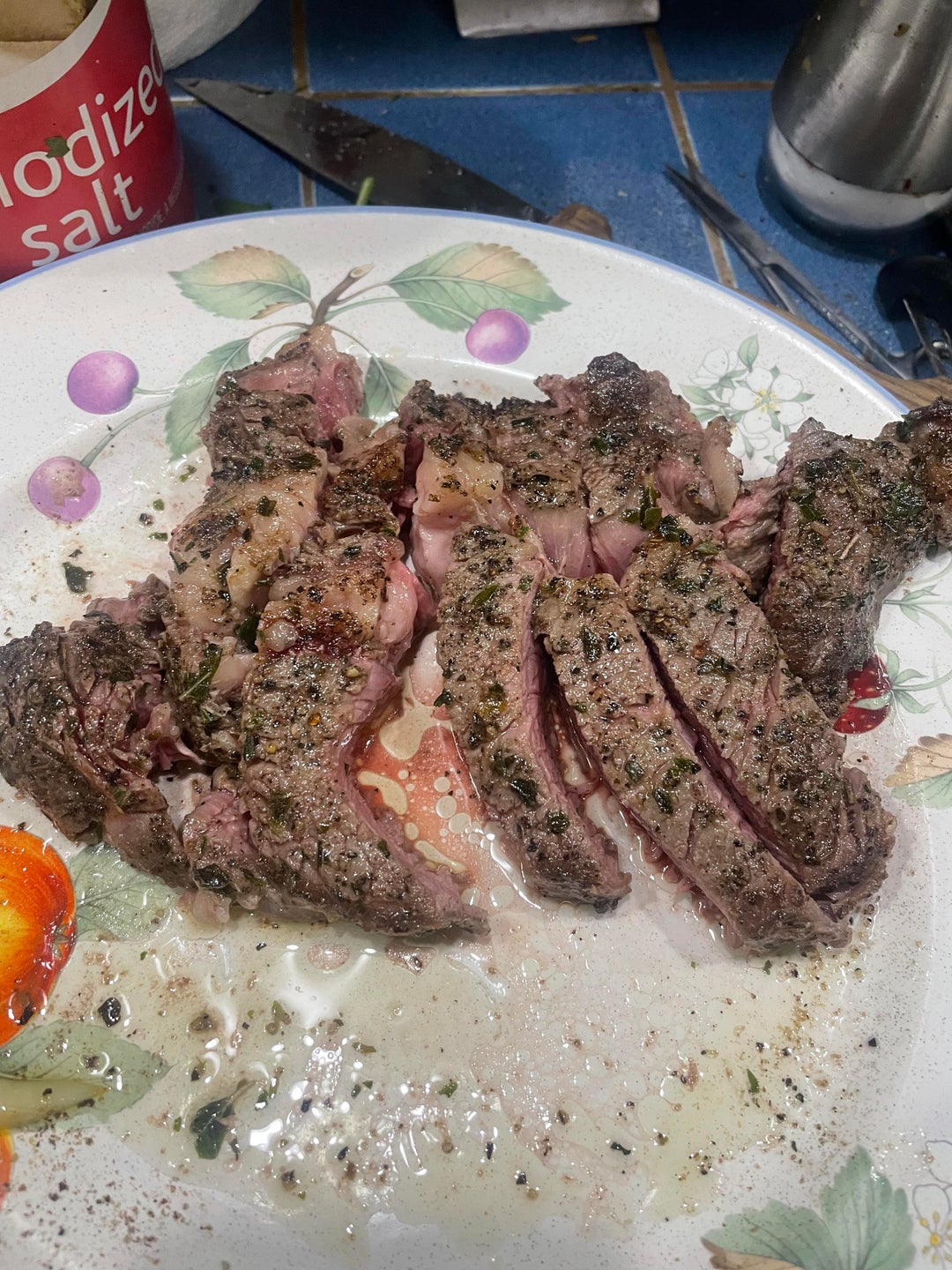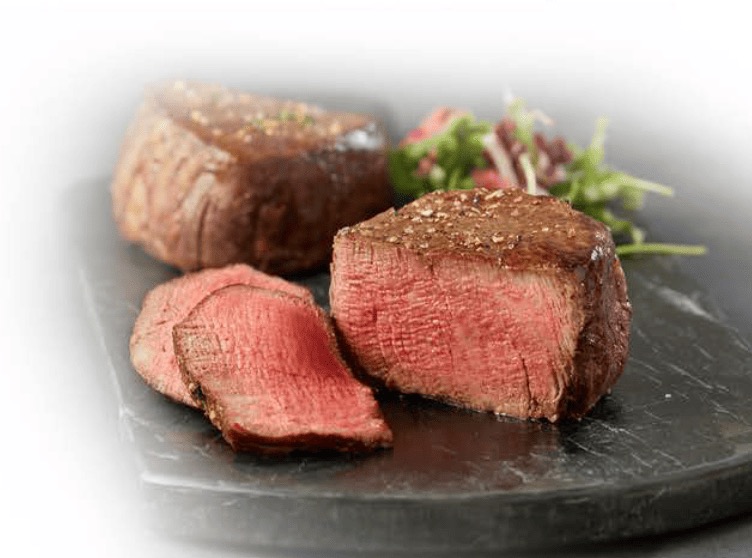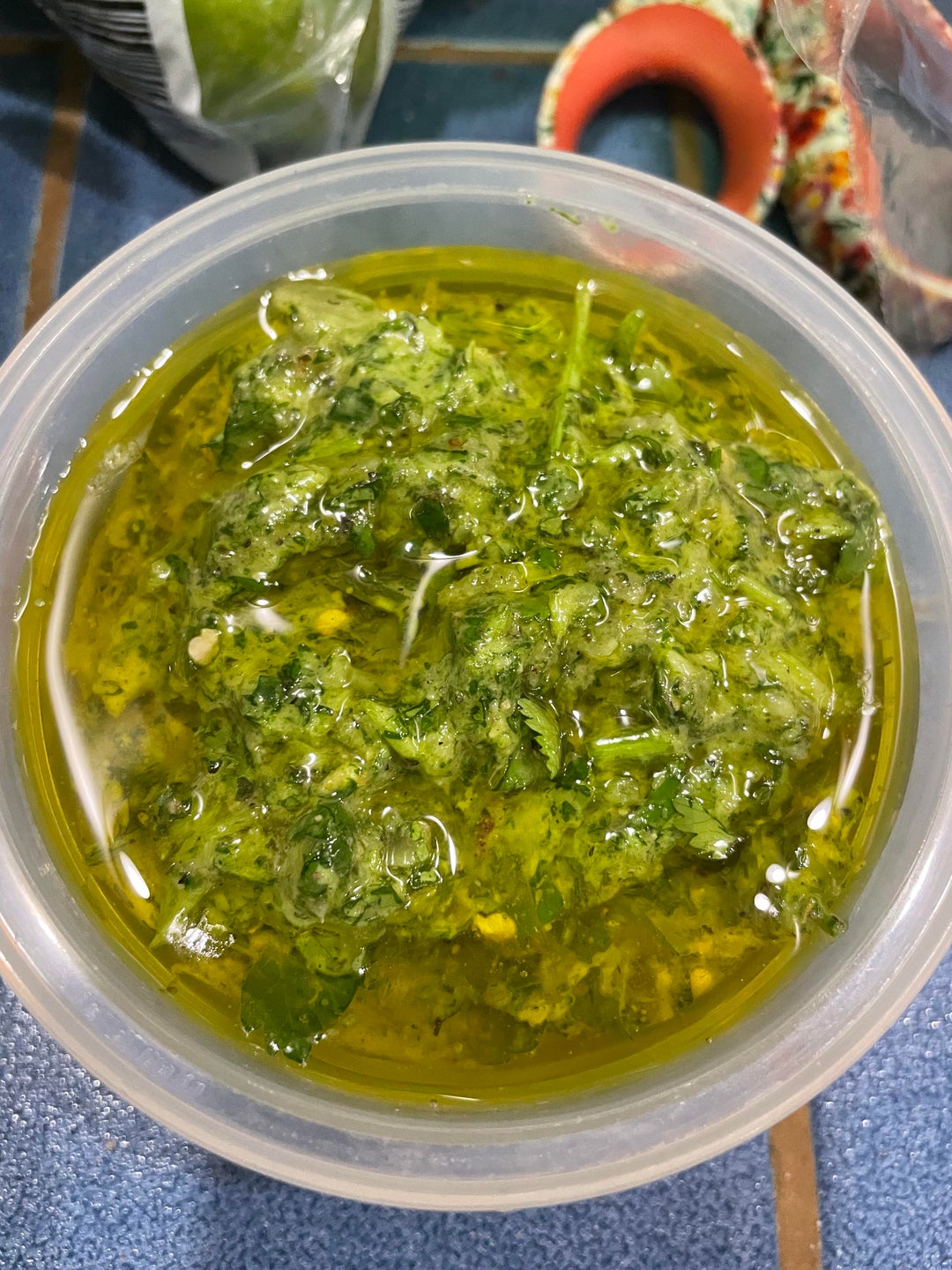Today’s topic is My Steak Is Grey. Obviously, you can find a great deal of The Reason Your Steak Is Gray-related content online. The proliferation of online platforms has streamlined our access to information.
There is a connection between the Is It Safe to Eat Ground Beef That’s Turned Gray? and my steak is grey information. more searching has to be done for Grey Steak Reddit, which will also be related to Why Does Steak Turn Grey.

48 Tips for My Steak Is Grey | Why Is My Steak Grey Before Cooking
- When steak is exposed to air for a long period of time, mold will begin to appear. It is a serious symptom of spoilage. Mold comes in the form of white or green areas on the surface of the steak. You must throw it away once you see any. - Source: Internet
- Frequently Asked Questions on How to Tell if Steak Has Gone Bad Here are some quick answers to the top questions about bad steak, including why it happens and if it’s a big deal or not. What Happens if You Eat Bad Steak? Steak that has spoiled may contain harmful mold, bacteria, or toxins. While many are benign or can be taken care of by the digestive system, there is always a risk of becoming sick. Bad steak may also taste bad. While a bad taste won’t lead to illness, it will lead to disappointment. - Source: Internet
- Like other perishable foods, steak does not last long at room temperature. That’s why you have to store it at once. According to the Food and Drug Administration, unrefrigerated steaks will be spoiled after 2 hours. - Source: Internet
- This is the fastest but also the least recommended method. You can use the defrost option on the microwave to thaw steak. However, it will somehow dry out the steak, making it less juicy. Unless you run out of time, I think thawing steak in the fridge or water is the better option. - Source: Internet
- You already know how to choose steak and store it properly. The next step to a delicious steak meal is to thaw it, and you should also do it the right way. Stay with me! I will show you how. - Source: Internet
- Will Defrosting and Refreezing Steak Cause it to Go Bad? If a frozen steak is safely defrosted, it’s ok to refreeze it for future consumption. The safest way to defrost a steak is to leave it in its wrappings and place it in the refrigerator until it’s thawed. By keeping the steak consistently under 40F, you remove the opportunity for harmful bacteria to form. If you decide not to cook a defrosted steak, move it back to the freezer ASAP, and maintain an airtight seal on the packaging to protect it from freezer burn. Be aware that, while safely defrosting a steak and then refreezing won’t make it go bad, it may negatively impact the flavor when you do cook it. - Source: Internet
- Get the steak into the fridge as soon as possible. And be sure your fridge temperature is set for no higher than 40F. (I keep mine at 38F.) - Source: Internet
- Certain factors can affect the amount of myoglobin in muscle tissue. For instance, the older a steer, the more myoglobin in that steer’s muscles. Similarly, muscles that receive more exercise in life (such as the muscles that make up skirt steak and flank steak) also develop more myoglobin. - Source: Internet
- Freezing steak helps it to last almost forever since the low temperature prevents harmful bacteria from growing. I will show you the step-by-step guide to do it. But first, you need to ensure that your steak is in good condition. Otherwise, there is no point in freezing it. - Source: Internet
- Question: I purchased some steaks a couple of days ago and they’ve been refrigerated the whole time. But now the color of the meat has become darker and more brown. Are the steaks still safe? - Source: Internet
- Can Eating Off Steak Make You Sick? Eating bad steak won’t necessarily make you sick, but the potential is there. Serious pathogens, including staphylococcus, E. Coli, and salmonella can be found in or on bad steak. Bacteria like these can cause serious illness and may even be life-threatening, especially to children and the elderly. And cooking meat at high temperatures does not guarantee to kill these bacteria. - Source: Internet
- One of the best ways to ensure that you have great-quality meat on-hand at any given time is to rely not on fresh, but on frozen steaks. Carter Country Meats, a purveyor specializing in frozen meat, notes that freezing its dry-aged steaks makes for improved flavor and texture, not to mention a longer shelf life. For the home cook, this points to two great options: Either buy your steaks already frozen from a company like Carter Country Meats or Omaha Steaks, known for its premium frozen beef, or freeze it yourself. If you’re armed with a big freezer, this even means that you can even go in on a cow share with friends to source the best-quality meat at a truly reasonable price point (via Carnicopia Meats). - Source: Internet
- For raw steak, it is important that you keep its original package. This is the safest and most convenient way. However, given that you already open it, you can wrap it in freezer paper or a vacuum sealer. - Source: Internet
- How Long Can Steak Stay in the Fridge? See our article on how long raw steak can stay in the fridge for a deep discussion on this. But the main takeaway is that fresh steak that’s properly wrapped is typically safe to store in the fridge for 3 to 5 days, according to the USDA. That’s not a hard and fast rule; it may be good for longer under ideal conditions. However, always carefully inspect any meat you’ve had in storage before cooking it. Cooked steak may be kept in the fridge for up to 4 days if tightly wrapped. - Source: Internet
- Raw meat isn’t going to smell like flowers, but rotten meat has a certain distinct, nose shriveling smell to it. Any off putting smells coming from your steak and it’s likely to be spoiled. The nose knows after all. - Source: Internet
- After you wrap the steak, everything else is easy. You just need to put it in the freezer, and feel free to defrost it within 6-12 months, depending on the type of steak. Make sure you write the date you put it in somewhere on the container. - Source: Internet
- According to the United States Department of Agriculture, any food held at a precise temperature of 0°F is safe to eat eternally. Uncooked roasts, steaks, and chops should be thrown out after a year in the freezer, while uncooked ground beef should be thrown out after only four months. Meanwhile, prepared frozen meat should be discarded after three months. - Source: Internet
- Next, wrap it tightly in a plastic layer. Fold it carefully so that no air surrounds the steak. However, 1 layer is not enough to protect your steak from the low temperature. - Source: Internet
- You should move your fingers through the steak to check its texture. Steaks are moist, but they are not slippery or slimy. The appearance of yellowish slime indicates that bacteria has started to grow, followed by mold. - Source: Internet
- If you’ve ever eaten a banana with a spotted peel, or guacamole that has browned on the surface due to being left out too long, you know that color isn’t always an indicator of bad tasting food. Despite the fact that a little bit of color change is usually harmless, we eat with our eyes first, and gray steak for example, isn’t exactly appetizing. Fortunately however, grayness after cooking isn’t a sign that there’s something wrong with the meat, Cook’s Country explains. Instead it’s a result of the steak being a little too wet before you put it on the grill or stove. - Source: Internet
- Now, imagine that you learned the ideal duration to cook steak at 400 F and made a delicious dish of steak. However, since your eyes are bigger than your stomach, you cannot finish it up. But you don’t want to waste the leftovers, so you refrigerate or even freeze them. - Source: Internet
- Before storing and cooking, you should be able to pick fresh raw steak from the supermarket. This is the foremost condition that determines how long you can store it. Don’t worry. It is important but not difficult as long as you follow these tips. - Source: Internet
- A faster way is to use water. And it is best to use cold water. Using hot water can trigger the activation of harmful bacteria. You should replace the water after every 20 minutes and keep an eye on it to ensure it is always cold. Your steak will need 6-10 hours to be ready to cook. - Source: Internet
- What Causes Steak to Change Color? A pigment in steak (and other meat) called myoglobin gives it a dark red or purplish color. Exposure to oxygen transforms myoglobin into oxymyoglobin, which imparts more of a cherry hue to meat. To our eyes, that color equals delicious, so stores use oxygen-permeable plastic wrap to help it hold the cherry color. Soon, though, prolonged exposure to oxygen and light changes oxymyoglobin into metmyoglobin. This is when steak starts to turn grayish-brown due to oxidation thanks to iron in the myoglobin. - Source: Internet
- Discoloration is another symptom of spoiled beef. The meat turns greyish brown, dark brown, or grey in most situations. The hue of the beef indicates that it has gone wrong. - Source: Internet
- I mentioned earlier that a good raw steak should be moist. It will also be soft and squishy to the touch. The opposite is true of a steak that’s gone bad; it will be dried up and firm and perhaps sitting in a pool of its own lost juices. - Source: Internet
- That doesn’t mean your steak is for sure no good the day after the use-by date. Or even the day of. It’s just another indicator to help you make a decision. - Source: Internet
- Let’s assume you have marinated steak according to the suggested time with salt, peppers, olive oil, and other ingredients. And you plan to cook it in the next few days. You can definitely store it. - Source: Internet
- If you love grilling steaks, you know all about anticipation. Hopefully, you’ve never had to experience finding your steak has gone bad. (But, if you’re reading this, there’s probably a reason.) - Source: Internet
- Because steaks need oxygen to turn red, vacuum-sealed steaks often have a darker, more purple appearance than others before they are unpackaged. For instance, at Chicago Steak Company, we ship our steaks in vacuum-packaging. As a result, we sometimes answer questions from customers about why our steaks appear darker upon arrival. We’re always happy to inform customers that their steaks are in top condition and will turn red if left exposed to oxygen for a short length of time. - Source: Internet
- Run a clean finger across the steak. If it feels slimy or slick, that’s a solid warning sign your steak is off. Whether it is or isn’t slimy, be sure to wash your hands after doing the touch test. - Source: Internet
- To help prevent freezer burn, wrap meat and poultry so the entire surface comes in direct contact with the plastic wrap. This may entail wrapping individual steaks separately, rather than as one big package. Get the plastic wrap as close the the food surface as you can, and double wrap when possible. Then place the wrapped items in a freezer-proof plastic bag, removing as much air from the bag as possible before sealing. Don’t forget to mark the bag with the name of the food, the weight or amount, and the date you put it in the freezer. - Source: Internet
- Refrigerating steak is the optimal way to keep it fresh for several days. Follow this comprehensive instruction so that you can do the best for your steak. The procedures of storing raw steak, cooked steak, and marinated steak are the same. - Source: Internet
- This step is simple and straightforward. You just need to put the wrapped steak in the fridge. The colder the fridge is, the longer the steak will last. Therefore, you should place it in the coldest part of the fridge. - Source: Internet
- Sometimes you may wonder if it’s possible to store steak in your freezer because you want to eat a savory steak dish. It may depend on the ingredients in the marinating sauce but all in all, it’s a good choice. You can store it for up to 3 months but still get the fresh flavor. - Source: Internet
- How to tell if steak is bad? Use your senses to determine. As for food, it is better safe than sorry. In case you are not sure, it is better not to eat it to avoid being poisoned. - Source: Internet
- A mild crimson or metallic odor emanates from fresh red meat. This aroma isn’t strong, and you’ll have to put your nose right up against it to smell it. If your steak has gone wrong, on the other hand, it will have a distinct odor that smells sour or a little like eggs or ammonia. - Source: Internet
- According to the FDA, cuts such as roasts and steaks can be frozen for 4 to 12 months and 6 to 12 months, respectively. Ground beef should only be frozen for three to four months at a time. You may also safely freeze the meaty leftovers once they’ve been cooked. - Source: Internet
- Only buy the steak that has a firm texture. You should touch it to test. Press it using your finger. If it springs back to the original state, then it is worth buying. - Source: Internet
- The best method to thaw steak while maintaining its quality is to put the frozen steak into the fridge on a premium thawing tray (if possible). The relatively low temperature in the fridge can prevent bacteria from growing. It takes at most 24 hours for the steak to be completely thawed. - Source: Internet
- Knowing how to cook a good steak dish is not enough. You also need to know its shelf life. In the table below, I present the shelf life of raw steak and cooked steak in different storage conditions. Check it out for a quick understanding. - Source: Internet
- Picture a perfect raw steak in your mind. Is it dark red with a bit of white marbling? Of course it is. That’s the classic image we’ve all seen in ads, cartoons, movies, and so on. - Source: Internet
- The answer is the type of plastic wrap used by supermarket butchers. Grocery stores and supermarkets use a special kind of plastic wrap that is filled with tiny holes. These holes are too small for liquids to pass through, but are big enough for air to get in and out. This ensures the steak is still exposed to oxygen. As a result, supermarket steaks look just as red and attractive as those at the butcher’s counter. - Source: Internet
- There’s a commonly held notion that if your steak has turned partially brown or gray, it’s no good. Color change in raw beef may be caused by exposure to oxygen, and it’s not a big deal. A few spots of gray or brown are not always indicators that steak is bad. - Source: Internet
- As any grocery store can tell you, the redder the steak, the faster it sells. One look at a meat counter, and it’s not hard to understand why. Our brains have been wired to connect that rosy-red color with quality meat. And while our brains sometimes get it right, more than a few shoppers have picked lower quality meats due to superficial differences in color. - Source: Internet
- The surface of the flesh turns red as it comes into touch with oxygen. The color of the meat turns to a gray-brown color when it is not exposed to oxygen. However, this does not imply that it has been spoiled. Ground beef that has been frozen may appear grey, but it is still safe to eat if stored properly. - Source: Internet
- Ah, the old sniff test! Some smells are obvious indicators of food that’s past its prime. We’ve all done it on yogurt, sandwich meat, socks — you name it. But what about steaks? - Source: Internet
- Steaks smell good. Although they do have a bloody odor, it is a pleasant one. Fresh steak nearly does not have any smell unless you put it close to your nose. - Source: Internet
 Following are some suggestions on where to begin your search for data on Why Is My Steak Pale:
You should try to find my steak is grey after thawing-related information from reputable places. Libraries, online resources, and even paid journalists all fall under this category.
Following are some suggestions on where to begin your search for data on Why Is My Steak Pale:
You should try to find my steak is grey after thawing-related information from reputable places. Libraries, online resources, and even paid journalists all fall under this category.It’s crucial to be aware of the many electronic media sources available when researching Raw Steak Gray Inside, such as Google and YouTube. You may also get info about Why Does Steak Turn Grey on social media sites like Facebook and Twitter.
Video | My Steak Is Grey
It’s crucial to read to examine the authenticity of each source in order to acquire the greatest information regarding Why Did My Steak Turn Grey In The Fridge. You’ll learn more about Beef Mince Grey But In Date after watching the films included in this post, which come from a variety of different sources. Information on a wide range of topics may be easily accessed via the internet.
## Notable features of Raw Steak Grey include:- My Steak Is Grey
- My Steak Is Grey After Thawing
- My Steak Is Grey After Cooking
- My Beef Is Grey
- My Meat Is Grey

Because there are so many websites and forums that provide information about My Steak Is Grey After Thawing, it should not be difficult for you to locate the data that you want.
The majority of individuals are accustomed to taking a completely different approach when it comes to obtaining information regarding Gray Meat Meaning. This makes it possible to take a more in-depth look at the information that is available about Why Does Steak Turn Grey and how it might be utilized.

methods for producing information displays about My Steak Is Grey After Thawing that are both aesthetically pleasing and functional. In commercial and marketing settings, as well as for the purpose of conveying information on Why Did My Steak Turn Grey In The Fridge, they are useful tools to have. Because of this, we also supply some photographs relating to Why Does Meat Turn Brown When Cooked.
In summing up, I’d like to say that this article offers a general summary of my steak is grey after thawing. Also covered are Raw Steak Grey and my beef is grey, which serve as a benchmark for evaluating the depth of your understanding of Is It Safe to Eat Ground Beef That’s Turned Gray?.